Gardeners often enhance their flower beds with ornamental plants that have bold flowers, attractive fruits, or distinctive leaves. Unfortunately, many of these eye-catching additions to our gardens are non-native invasive plants that harm the habitats for native plants and animals.
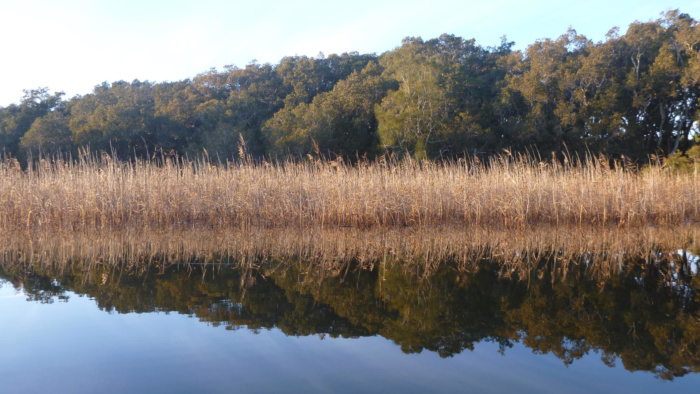
Photo by Doug Beckers, Creative Commons License
When transplanted from other regions, these plants may have no natural checks on their growth and spread. In the absence of predators and diseases that typically limit how much a plant grows and reproduces, invasive plants can be aggressive in a new environment. Unknowingly, gardeners may amplify this threat by planting these aggressive ornamentals that then escape into natural environments.
The seeds from fast-reproducing invasive plants blow into forests, wetlands, and waterways; sometimes they are carried by wildlife or on cars, boats, or boots. Other times invasive organisms may be dumped from a water garden into a lake.
Ecosystems in the Great Lakes watershed have been devastated by introduced invasive species. Common reed dominates the shores, growing throughout the marshes and bays, crowding out the flora that has been typical of the coastal community for millennia. In a number of natural habitats invasive species cause rippling effects.
Learn About Common Invasive Species
Impacts of Invasive Plants on Wildlife
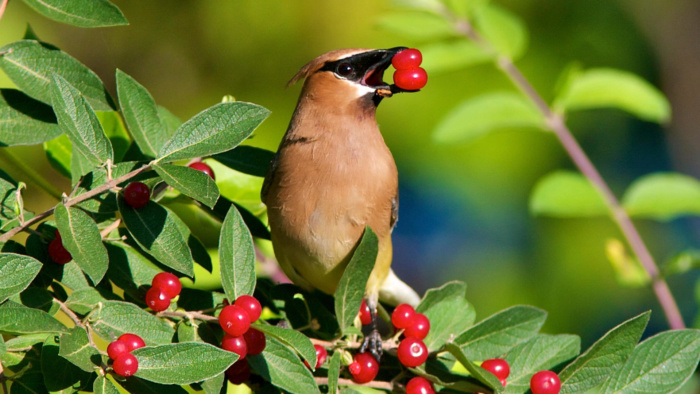
Photo by Henry T. McLin, Creative Commons License
Birds
Invasive shrubs, like Japanese honeysuckle, produce fruits of low nutritional value that are consumed by birds like song sparrows and cedar waxwings and are less likely to be habitat for the insects many birds rely on for food. Less food and poor-quality food may have a negative impact on migration and reproduction in birds. Replenishing their energy reserves at stop overs on migration routes is essential for birds’ flight to their destinations. Studies show that lower numbers of insect prey in bird habitats containing invasive plants can result in delayed breeding and fewer young raised.
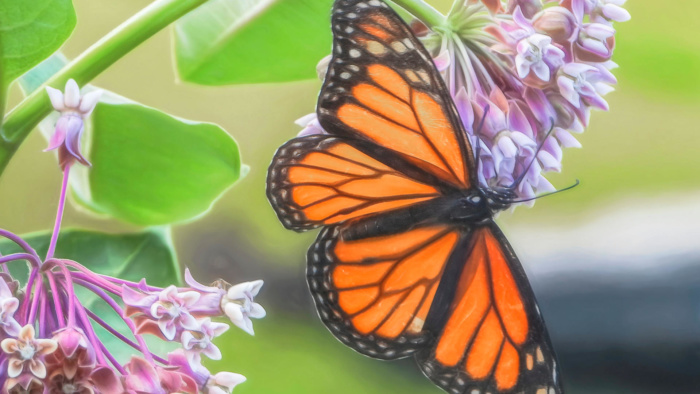
Photo by Jo Zimny Photos, Creative Commons License
Insects
Butterflies and other insects also rely on native plants for nectar and other food resources. Many insects have a very narrow group of plants they consume as food. The caterpillars of monarch butterflies only eat leaves of select plants in the milkweed family, acquiring the chemical compound from milkweed that deters predators and remains in the insect as it matures into an adult butterfly. Without sufficient host plants, the butterflies cannot complete their life cycle.
Native bees and European honey bees, important for pollination of plants including crops, also need habitat and blooming plants throughout their flight period. Bees provide a service to agriculture by pollinating crop plants that produce food. When farms occur in a landscape with nearby native plants, insects that pollinate crops have other food sources available as flowers on agricultural plants fade. The flowering plants in meadows, forests, and wetlands in areas adjacent to agricultural fields are particularly important for bees that are crop pollinators.
Costs
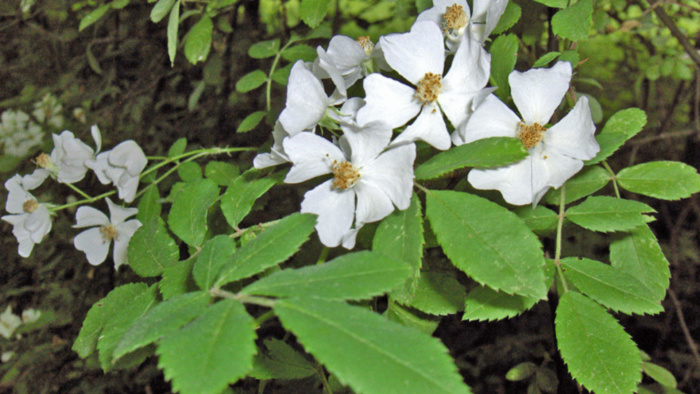
Photo by Edward Price, NatureServe, Creative Commons license
While some garden-varieties of non-native plants innocently persist, others escape from their plantings and cause harm in natural settings. Beyond consequences for the natural world, invasive species are costly to remediate and cause headaches for landowners and businesses in a variety of sectors. An estimate put the economic cost of invasive species across insects, plants, animals and microbes at $137 billion per year.1 The costs from damage from invasive species and management is increasing at a rate of sixfold and twofold every ten years.2
Be Part of the Solution
Gardening with Native Plants and Better Practices
Learn to identify the invasive plants in your garden and favorite outdoor spaces and what to do about them. The easiest thing any homeowner can do is replace invasive plants in your yard with native ones. Other natural gardening practices can also restore your outdoor space into habitat.
- Replace non-native ground cover, shrubs, trees, and other herbaceous plants with native varieties. Choose ones that are native to the region in which you are planting.
- Start a pollinator garden by planting flowering plants that are nectar sources for moths, butterflies, or birds and are caterpillar host plants.
- Add a variety of native trees and shrubs to your growing space that produce berries or nuts as food resources for wildlife.
- Remove areas of lawn and add native plants that support good soil and natural habitats.
- Maintain piles of leaves and brush to support wildlife and insects.
Native Gardens
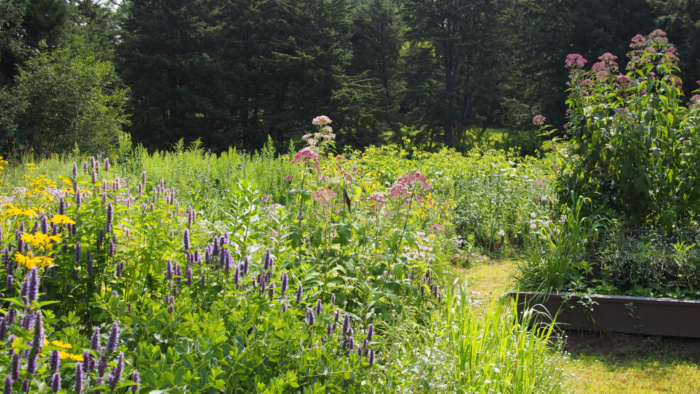
Photo by F.D. Richards, Creatives Commons License
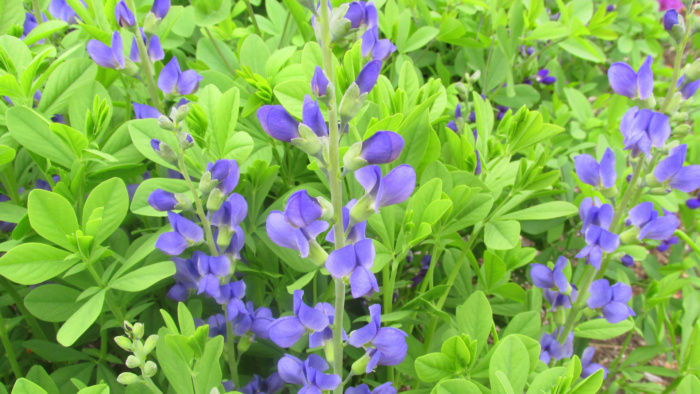
Photo by MWMS1916, Creative Commons License
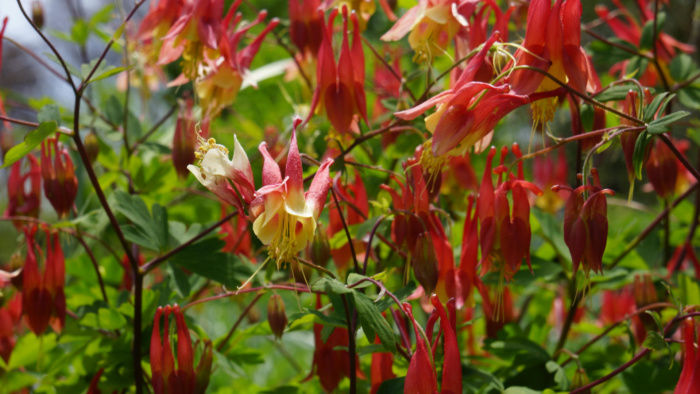
Photo by John Winder, Creative Commons License
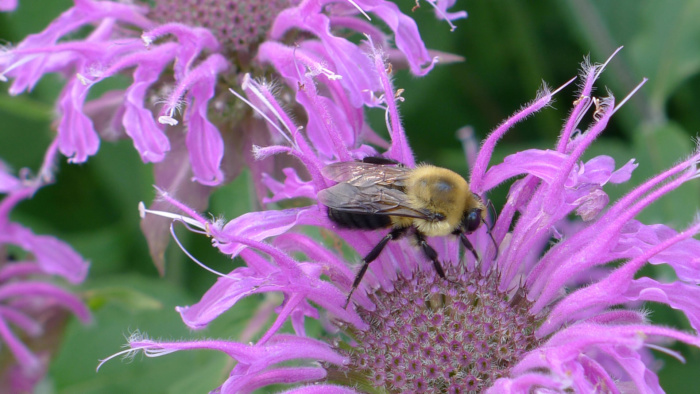
Photo by Alvin Kho, Creative Commons License
Reporting
Report invasive plants that escaped to natural environments to Pennsylvania iMapInvasives, a centralized reporting system. Be on the watch for early detection and high priority invasive plants, and learn what species are considered early detection and high priority by checking out the PA iMapInvasives website. By reporting your observations of invasive species to iMapInvasives, you are helping natural resource professionals and others understand their whereabouts in the state. This crucial information allows professionals to effectively prioritize future invasive species surveys and management efforts.
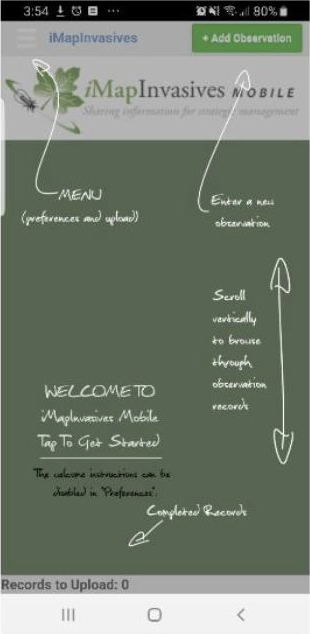
Resources
- Pennsylvania iMapInvasives
- Go Native Erie!
- Landscaping with Native Plants
- Native Plant Finder
- Link to Native Plant Finder for birds
- Native plants database
- Home Grown National Park: https://youtu.be/d9hxR7MbBDw
- Monarch plant list for Great Lakes
- Management Practices for Enhancing Wildlife Habitat
- Pennsylvania’s Field Guide to Aquatic Invasive Species
- Mid-Atlantic Field Guide to Aquatic Invasive Species
- Plant Invaders of Mid-Atlantic Natural Areas
- Invasive Plants of Pittsburgh
Invasive Management References
- Pennsylvania DCNR
Invasive Plant Management for Land Owners - Pennsylvania Land Trust Association
https://conservationtools.org/guides/31-invasive-species-management-program - Penn State Extension https://extension.psu.edu/trees-lawns-and-landscaping/home-gardening/weed-management
- Illinois Extension
Management of Invasive Plants and Pests of Illinois - Invasive.org
https://www.invasive.org/control/
Sources
1 Pimentel D, Zuniga R, Morrison D (2005) Update on the environmental and economic costs associated with alien-invasive species in the United States. Ecol Econ 52(3):273–288.
2 Diagne, C., Leroy, B., Vaissière, AC., Gozlan, R. E., Jarić, I., Salles, JM., Bradshaw, C., Courchamp, F. 2021. High and rising economic costs of biological invasions worldwide, Nature. https://doi.org/10.1038/s41586-021-03405-6
